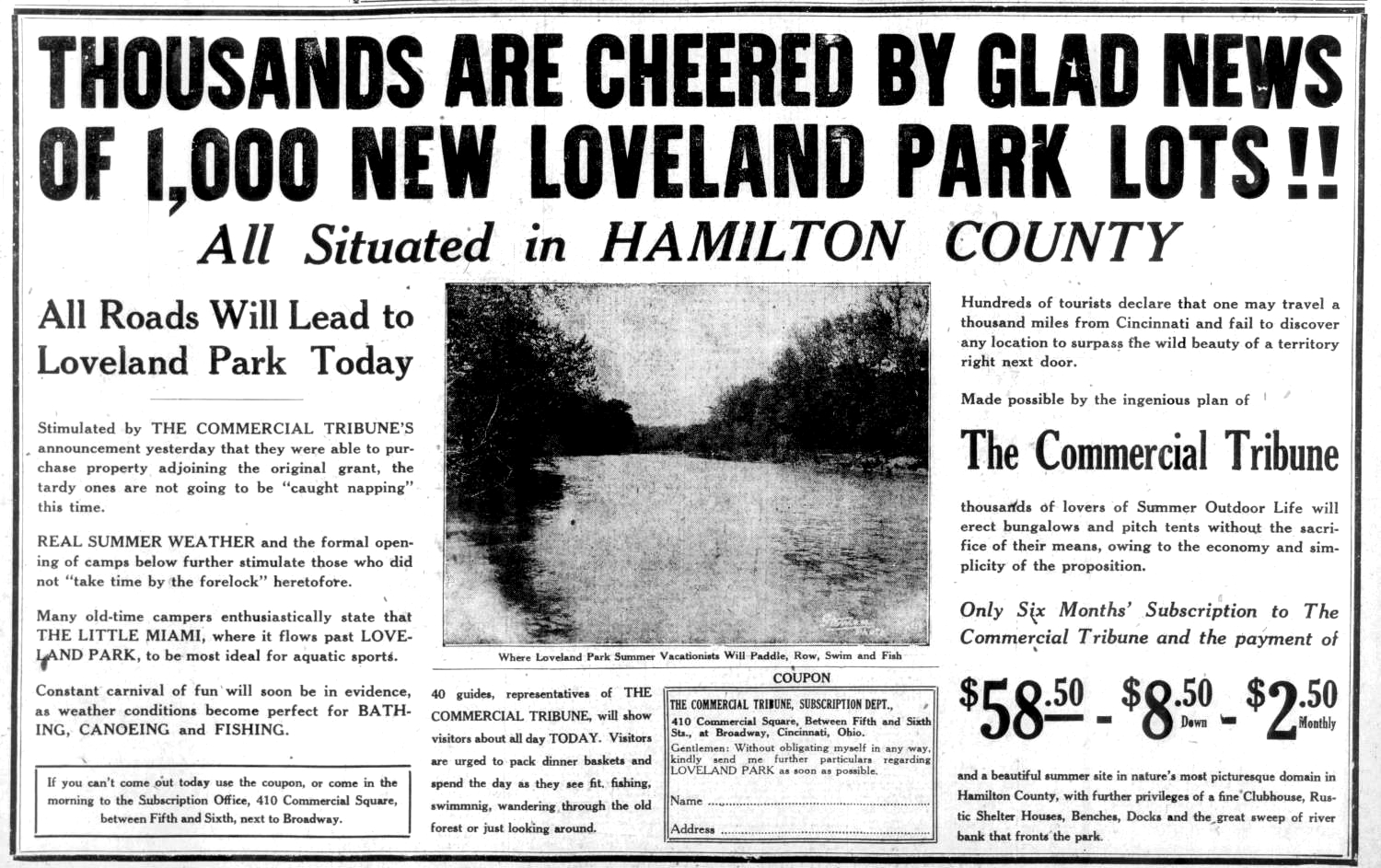A
struggling newspaper, the Cincinnati Commercial Tribune, attempted to boost subscriptions by buying a farm outside Loveland and subdividing it into tiny lots. The paper marketed these plots as a summer resort, but they were too small for building. Many original buyers sold their land, including Lillie Gegner who sold two adjacent plots to Harry D. Andrews in 1929. He built Chateau La Roche, later known as Loveland Castle, and the surrounding land is now owned by the Knights of the Golden Trail.
In the 1830s, a small but influential Black middle class emerged in Cincinnati. Samuel T. Wilcox, Gideon Mercer Langston, and John Woodson formed the Iron Chest Company, which built three brick buildings that they rented to white tenants. The company also helped fugitive slaves escape from slavery and assisted their less fortunate neighbors.
Susanna Gibbs transferred a parcel of land valued at $6,000 to Susanna Turner in 1902. It was later discovered that both names belonged to the same person, who had changed her name after separating from her husband. She died a few years later, leaving behind a complex web of property ownership.
Horace Sudduth built a successful real estate enterprise in Cincinnati despite facing racial discrimination. He opened the Creative Realty Company in 1910 and emphasized service over profits. By 1950, he had accumulated a fortune of more than half a million dollars.
Roy Van Tress rose from poverty to become a wealthy businessman, but his success was built on deceit and scams. He sold options for land that didn't exist or was worthless, leading to years of litigation. Van Tress died in 1924 after spending a decade in court.
A mysterious property transfer occurred in 1916 when Charles E. Miller sold a city block's worth of real estate to Ben Rubenstein. However, it was unclear who actually owned the land and what Rubenstein planned to do with it.
Nicholas Longworth became one of America's wealthiest men by investing in real estate. He started with a copper still that he accepted as payment for his services as an attorney. By 1859, the plot of land he received had increased in value to $750,000.
The term "Realtor" was introduced in Cincinnati in 1916, but it didn't prevent Edna White from swindling her clients out of thousands of dollars in 1954. She was sentenced to prison for embezzlement and issuing rubber checks.
Homeowners in Hamilton County often discover racially restrictive covenants in their property deeds, which were declared illegal by the Supreme Court in 1948. However, these covenants persisted in official records until they were finally eliminated in 1998.
Before 1990, homeowners could lower their property taxes by befriending Auditor Joseph L. DeCourcy Jr. An investigation revealed that he and his staff had improperly reduced tax valuations on over 1,000 properties, resulting in lost revenue for the county.













